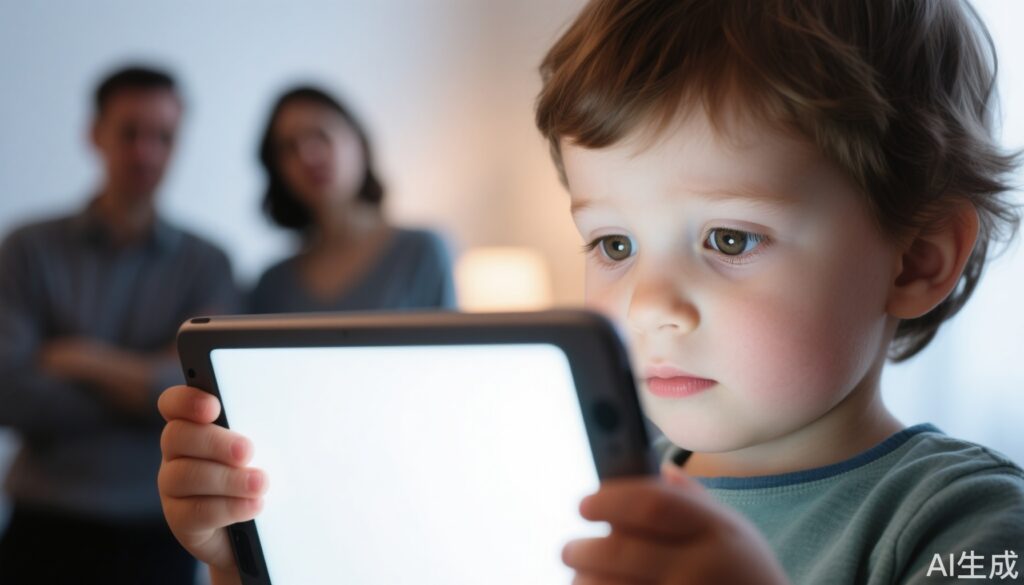In recent years, electronic screens—from smartphones and tablets to televisions—have become ubiquitous in households worldwide. For many parents, digital devices offer convenience and entertainment, sometimes even a respite during busy days. But as screens capture the attention of even the youngest family members, concerns arise: How does prolonged screen time affect the developing eyes of infants and toddlers? Are there risks to visual development that parents and caregivers should know about?
Scientific and Clinical Evidence: What the Data Tell Us
The early years of life are a critical window for visual development. During this period, a child’s visual system is rapidly maturing, learning to focus, track objects, and perceive depth and color. Disruptions to this process can have lasting effects.
Recent studies have brought attention to a possible link between excessive screen exposure in children under five and various visual issues. These include:
– Increased Risk of Myopia (Nearsightedness): Several large-scale studies, including research published in JAMA Ophthalmology (2020), have found that increased near work (activities that require focusing at close range, such as tablet use) is associated with higher rates of myopia in children. East Asian countries, where screen and academic time is high, report a myopia incidence of over 80% among school-aged children.
– Eye Fatigue and Digital Eye Strain: Even very young children can experience symptoms such as dryness, redness, and discomfort after extended screen use. Pediatric eye clinics have seen a rise in such complaints, especially since the COVID-19 pandemic increased digital learning and entertainment.
– Delayed Visual Skills Development: Emerging data suggest that children who spend less time on outdoor play and more time on screens may have delayed development of important visual skills, such as eye-hand coordination and depth perception.
Case Vignette: A Family’s Experience
Consider the story of the Zhang family. Their 18-month-old son, Xiao Jun, became fascinated with his mother’s smartphone. Over several months, he spent up to two hours daily watching cartoons and playing with apps designed for toddlers. When Xiao Jun’s daycare teacher noticed he struggled to track moving objects and squinted at picture books, the family sought an ophthalmologist. The doctor diagnosed early myopia and advised immediate changes to Xiao Jun’s daily routine—particularly reducing screen exposure and increasing outdoor activities.
Misconceptions and Harmful Behaviors
Despite growing awareness, several misconceptions persist:
– **”Educational apps are always beneficial for infants”:** While some digital content can support learning, the passive nature of most screen time for young children does little to foster visual or cognitive development. Real-world interaction—playing with toys, exploring, and socializing—remains essential.
– **”Blue light is the main culprit”:** While blue light exposure from screens has been a popular concern, current evidence suggests the primary issue is not blue light itself, but the duration and proximity of screen use, as well as reduced time spent outdoors.
– **”Screens calm fussy children without harm”:** While digital pacification is tempting, frequent reliance on screens can disrupt attention spans, sleep, and visual health.
Correct Health Practices and Practical Recommendations
International guidelines from organizations such as the World Health Organization (WHO) and the American Academy of Pediatrics (AAP) offer clear advice:
– **No screen time for children under 18 months, except for video chatting.**
– **For children aged 18–24 months, digital media use should be limited, supervised, and high-quality.**
– **Ages 2–5:** Limit screen use to one hour per day of high-quality programming, accompanied by an adult.
– **Encourage outdoor play:** At least one to two hours daily. Sunlight exposure is a protective factor against myopia and supports overall visual development.
– **Frequent breaks:** For any screen activity, encourage the “20-20-20” rule: every 20 minutes, look at something 20 feet away for at least 20 seconds.
– **Model healthy behavior:** Parents and caregivers should demonstrate balanced screen habits themselves.
Expert Insights and Commentary
Dr. Li Wen, a pediatric ophthalmologist, emphasizes, “The best thing parents can do for their child’s eyes is to prioritize real-world experiences. Screens, while convenient, should never replace outdoor play, creative activities, or face-to-face interaction—especially in the first years of life.”
She adds, “We’re seeing children present with vision problems at younger ages than before. Early intervention and parental awareness are key.”
Conclusion
In our increasingly digital world, protecting the visual health of infants and young children requires conscious effort. Prolonged screen exposure is not just a matter of entertainment or convenience—it’s a public health concern with real consequences for visual development. By understanding the risks, challenging misconceptions, and adopting healthy screen habits, families can give their children the best possible start for lifelong eye health.
References
– American Academy of Pediatrics. Media and Young Minds. Pediatrics. 2016;138(5):e20162591.
– World Health Organization. Guidelines on physical activity, sedentary behaviour and sleep for children under 5 years of age. 2019.
– Wang J, Li Y, Musch DC, et al. Progression of Myopia in School-Aged Children After COVID-19 Home Confinement. JAMA Ophthalmol. 2021;139(3):293-300.
– He M, Xiang F, Zeng Y, et al. Effect of Time Spent Outdoors at School on the Development of Myopia among Children in China: A Randomized Clinical Trial. JAMA. 2015;314(11):1142-1148.



